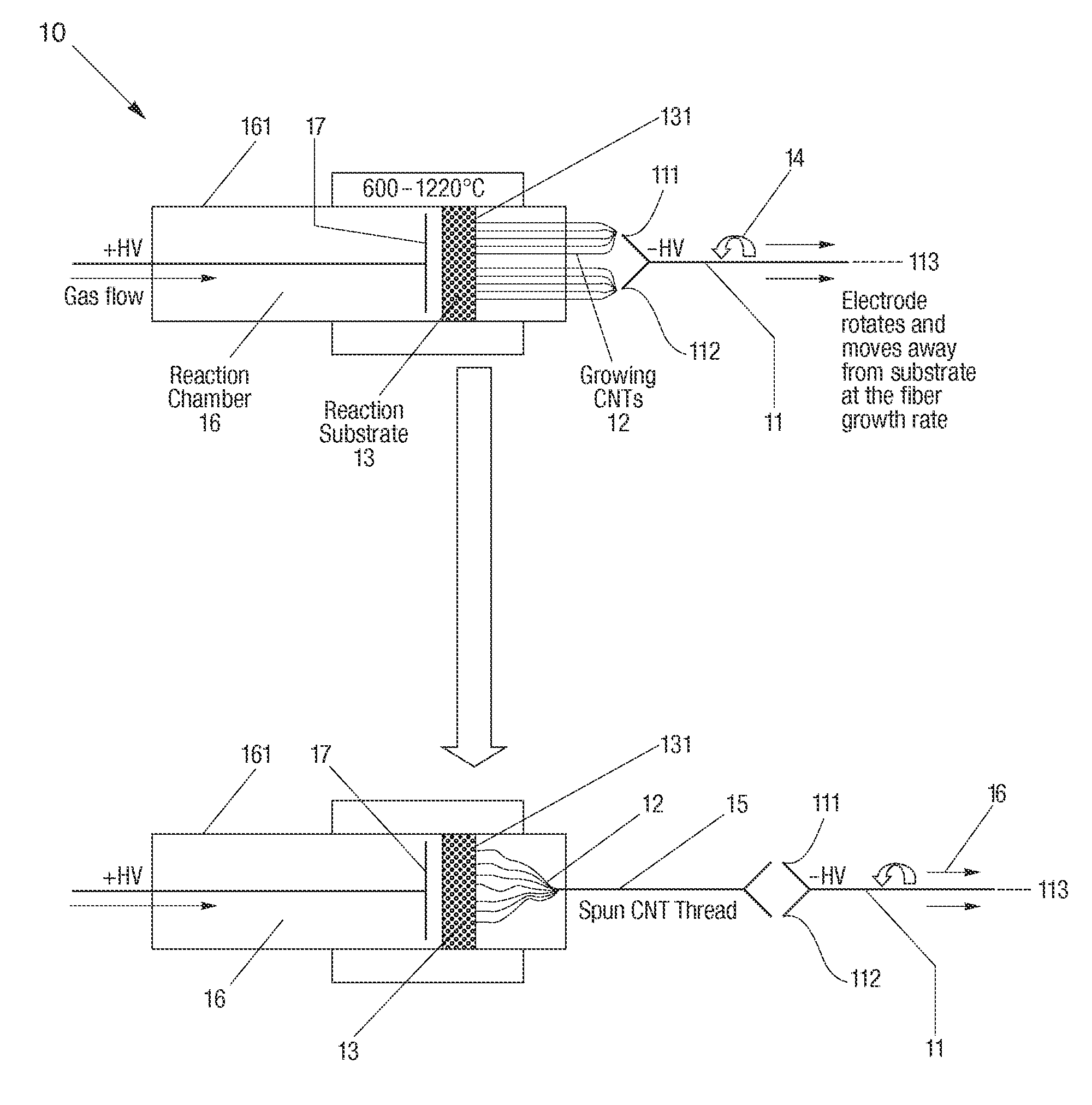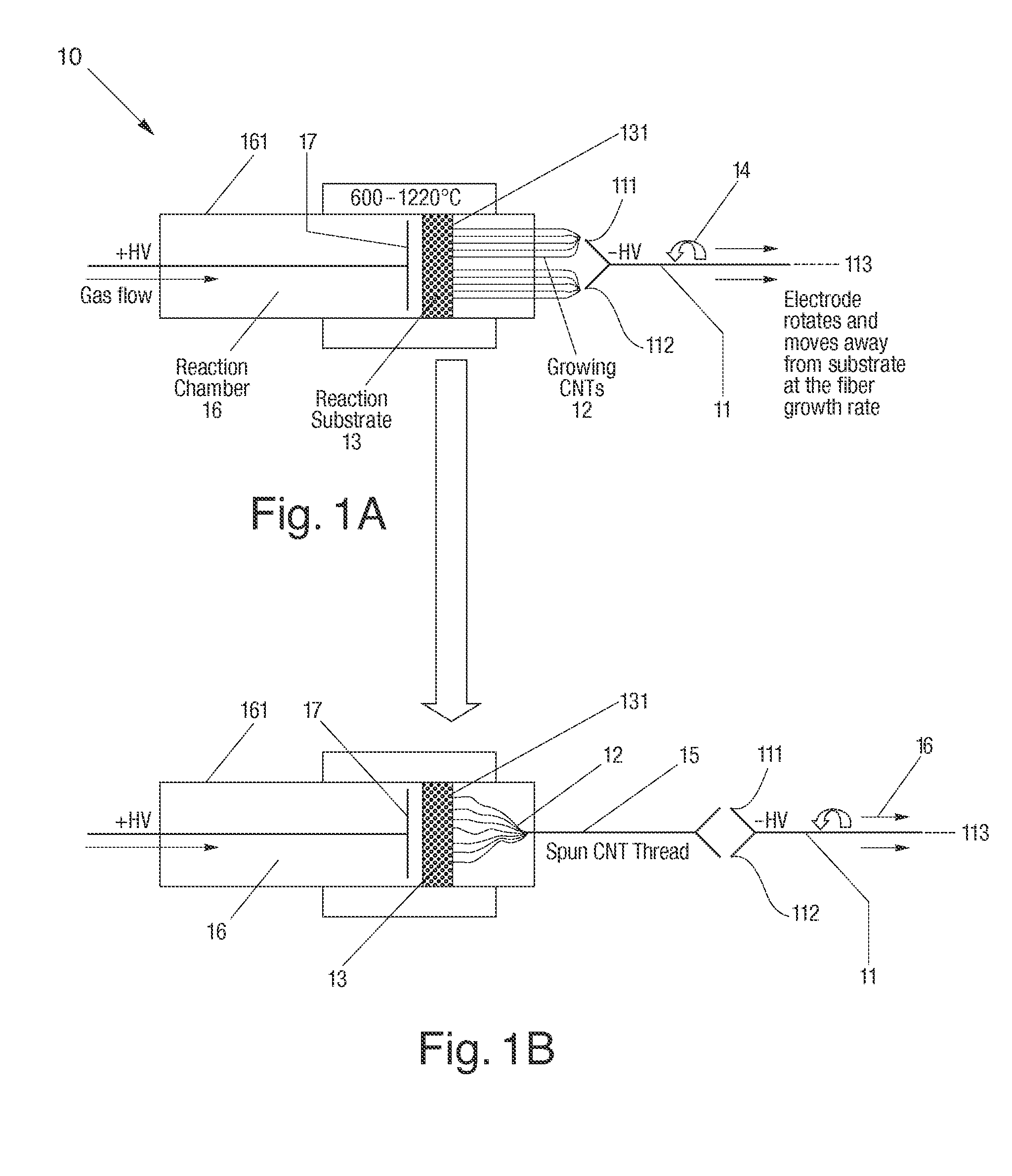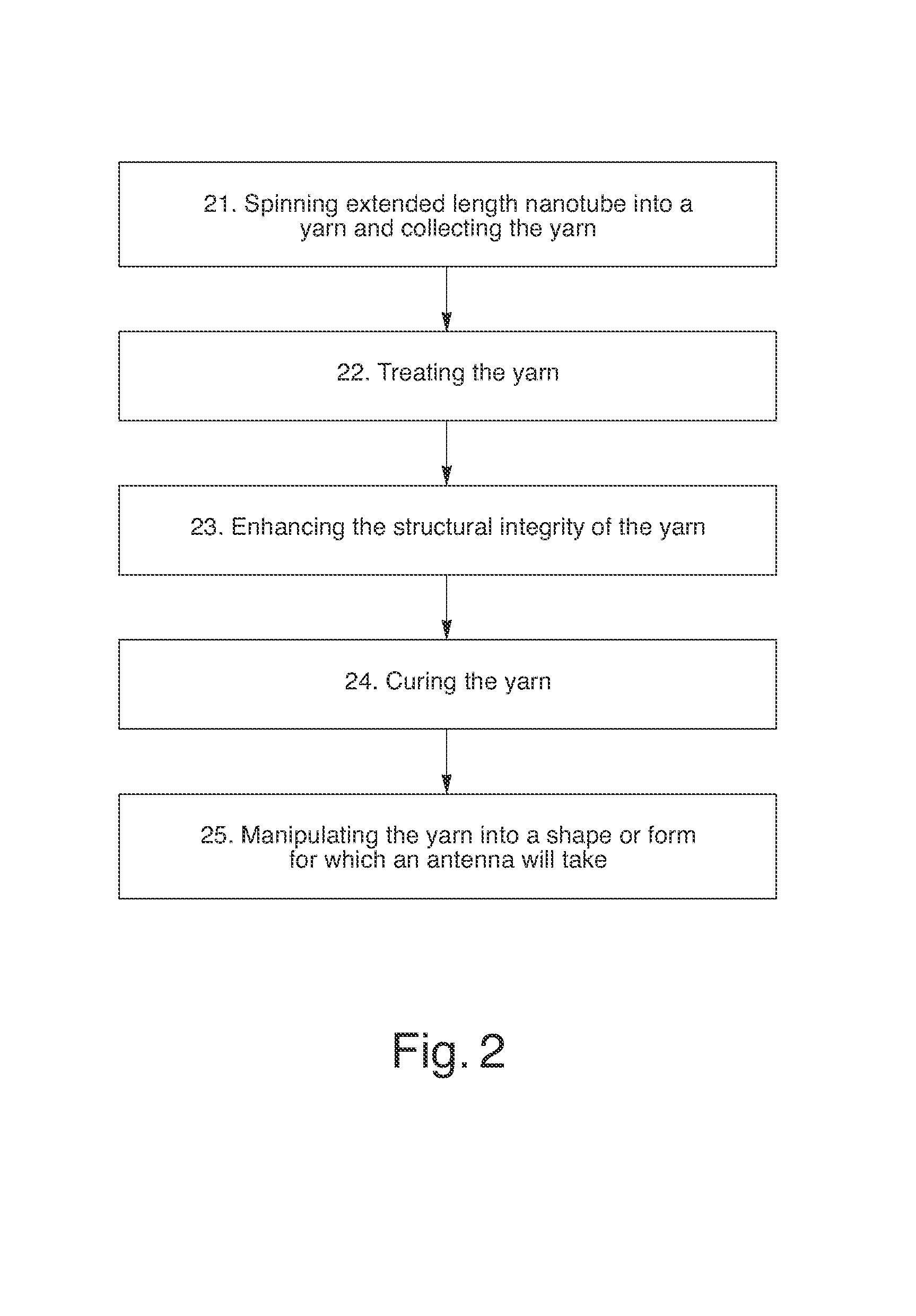Nanostructured antennas and methods of manufacturing same
a technology of nanostructures and antennas, applied in the field of nanostructures, can solve the problems of phase distortion, signal distortion, and the resistance provided by such materials is usually isotropic, and achieve the effects of minimizing surface current, minimizing signal distortion, and enhancing ballistic conduction
- Summary
- Abstract
- Description
- Claims
- Application Information
AI Technical Summary
Benefits of technology
Problems solved by technology
Method used
Image
Examples
Embodiment Construction
[0013]Carbon nanostructures, such as carbon nanotubes, for use in the manufacturing of an antenna or sensor of the present invention may be fabricated using a variety of approaches. Presently, there exist multiple processes and variations thereof for growing carbon nanotubes. These include: (1) Chemical Vapor Deposition (CVD), a common process that can occur at near ambient or at high pressures, (2) Arc Discharge, a high temperature process that can give rise to tubes having a high degree of perfection, and (3) Laser ablation.
[0014]At present, CVD appears to be one of the more attractive approaches from a commercial standpoint for fabricating carbon nanotubes. However, since growth temperatures for CVD can be comparatively low ranging, for instance, from about 600° C. to about 1300° C., carbon nanotubes, both single wall (SWNT) or multiwall (MWNT), may be grown, in an embodiment, from nanostructural catalyst particles supplied by reagent carbon-containing gases (i.e., gaseous carbon...
PUM
| Property | Measurement | Unit |
|---|---|---|
| length | aaaaa | aaaaa |
| length | aaaaa | aaaaa |
| frequency | aaaaa | aaaaa |
Abstract
Description
Claims
Application Information
 Login to View More
Login to View More - R&D
- Intellectual Property
- Life Sciences
- Materials
- Tech Scout
- Unparalleled Data Quality
- Higher Quality Content
- 60% Fewer Hallucinations
Browse by: Latest US Patents, China's latest patents, Technical Efficacy Thesaurus, Application Domain, Technology Topic, Popular Technical Reports.
© 2025 PatSnap. All rights reserved.Legal|Privacy policy|Modern Slavery Act Transparency Statement|Sitemap|About US| Contact US: help@patsnap.com



